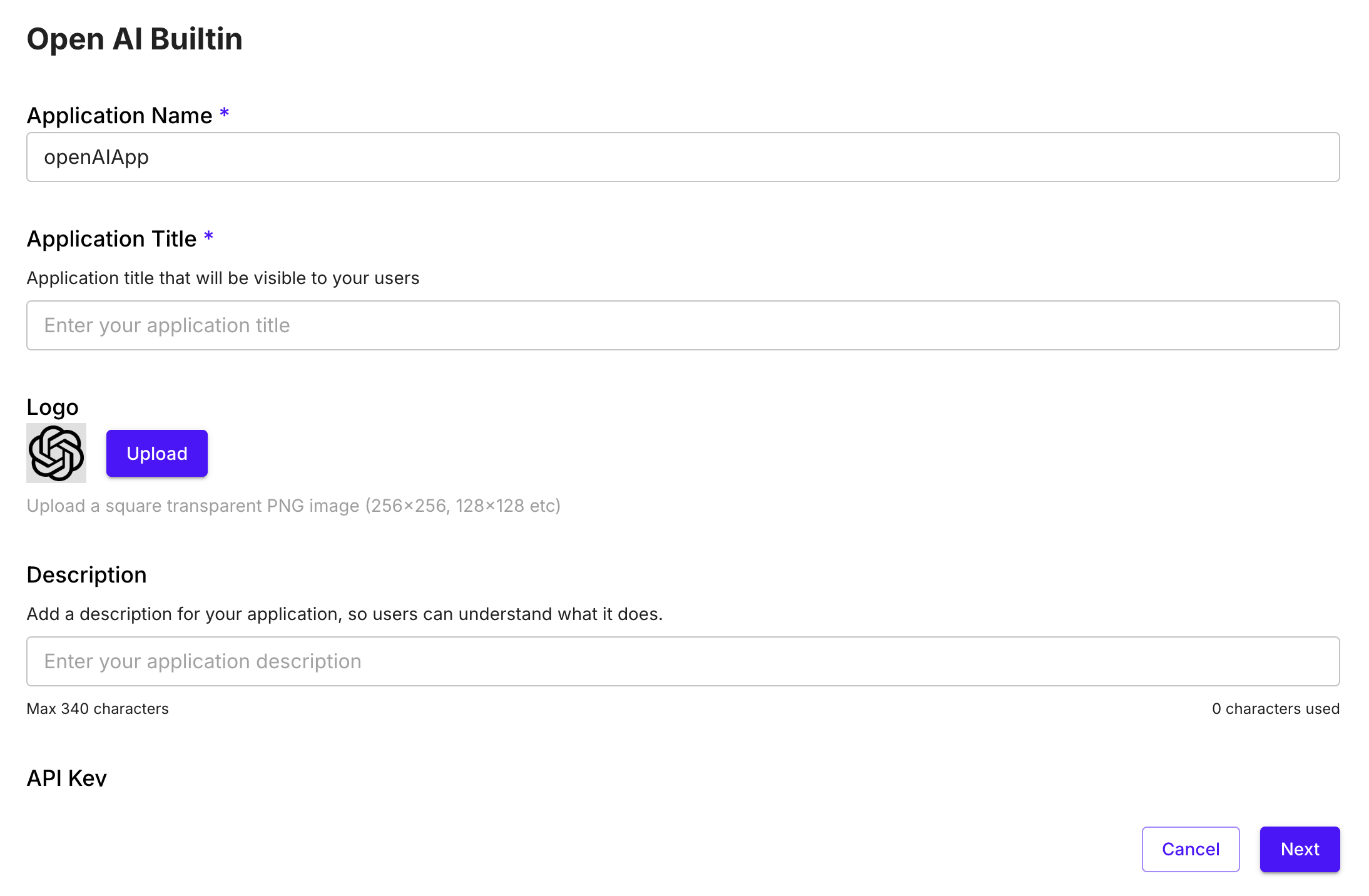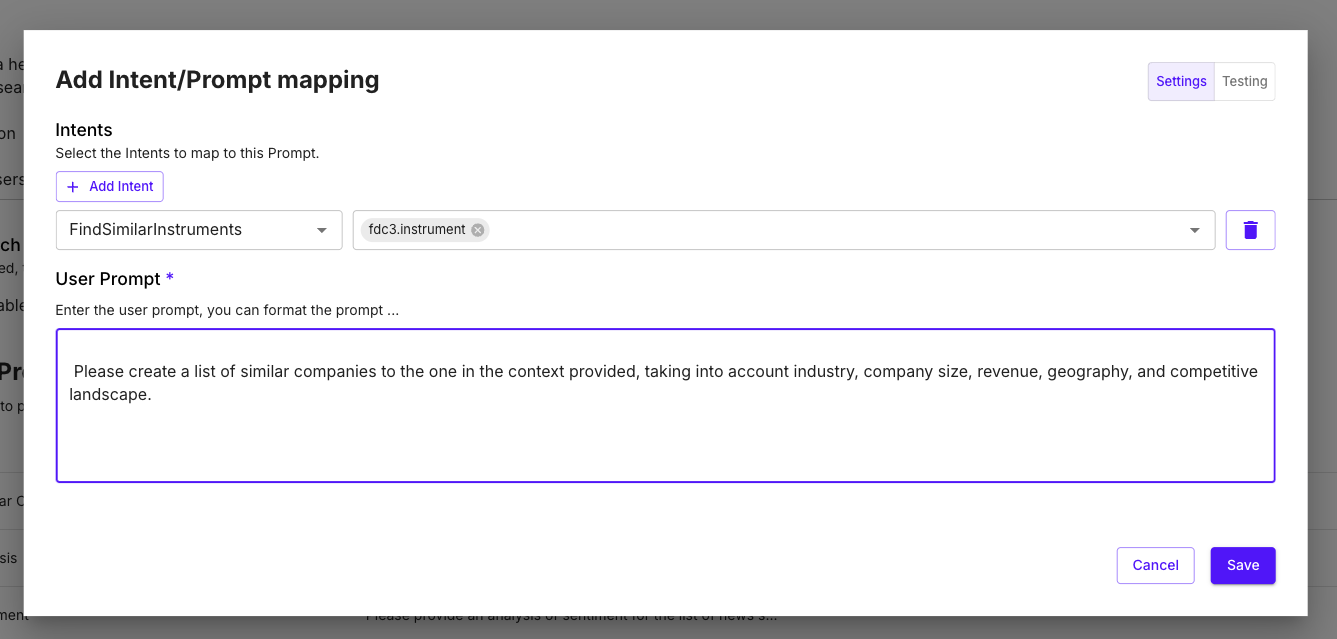Connectifi OpenAI App Setup
This document tells you how to setup and use the OpenAI app for Connectifi.
Prerequisites
You will need an OpenAI account and have an API Key for the account. Learn more here: https://platform.openai.com/api-keys .
Adding Your App
From a directory in Connectifi, add an app, and select the OpenAI application type from the list.

Choose:
- name for the application (must be unique the directory)
- title - this is how the application will identified in most UIs
- logo (optional)
- description - informs users and agents of the purpose of the application
- API Key - this is the api key from OpenAI
Choosing a Model
Enter any model name supported by your account and that supports the responses api. For example:
- gpt-5
- o3
- gpt-4.1
- gpt-4o-mini
Note: if you turn on WebSearch - you must use a model that supports websearch, for example: gpt-4.1
Creating a System Prompt
These are the overall instructions for your agent/application. For example, for a financial advisor application, you might use something like:
You are a helpful financial assistant that provides objective financial analysis and insights. You will search for details and use up-to-date information when answering questions about companies.
Enabling Web Search
This will toggle web search tools for the LLM on. Model must be compatible with web search. See not above and consult the OpenAI documentation .
Add Intents > Prompts Mappings
The OpenAI App will support any number of intents that will result in a contextual prompt being sent to the LLM and a response being returned as the context data type of the returnContext for the intent.
In the example below, the FindSimilarInstruments intent is being mapped to a prompt to
Please create a list of similar companies to the one in the context provided, taking into account industry, company size, revenue, geography, and competitive landscape.
This intent takes a context data type of fdc3.instrument and returns a context data type of fdc3.instrumentList. The OpenAI application type will ensure that the correct context data accompanying the intent is sent with the specified prompt to the LLM and that the correct context data type is returned as the response. This structured prompt and response allows applications to harness the generative power of LLMs while maintaining domain specific business logic and UX.
